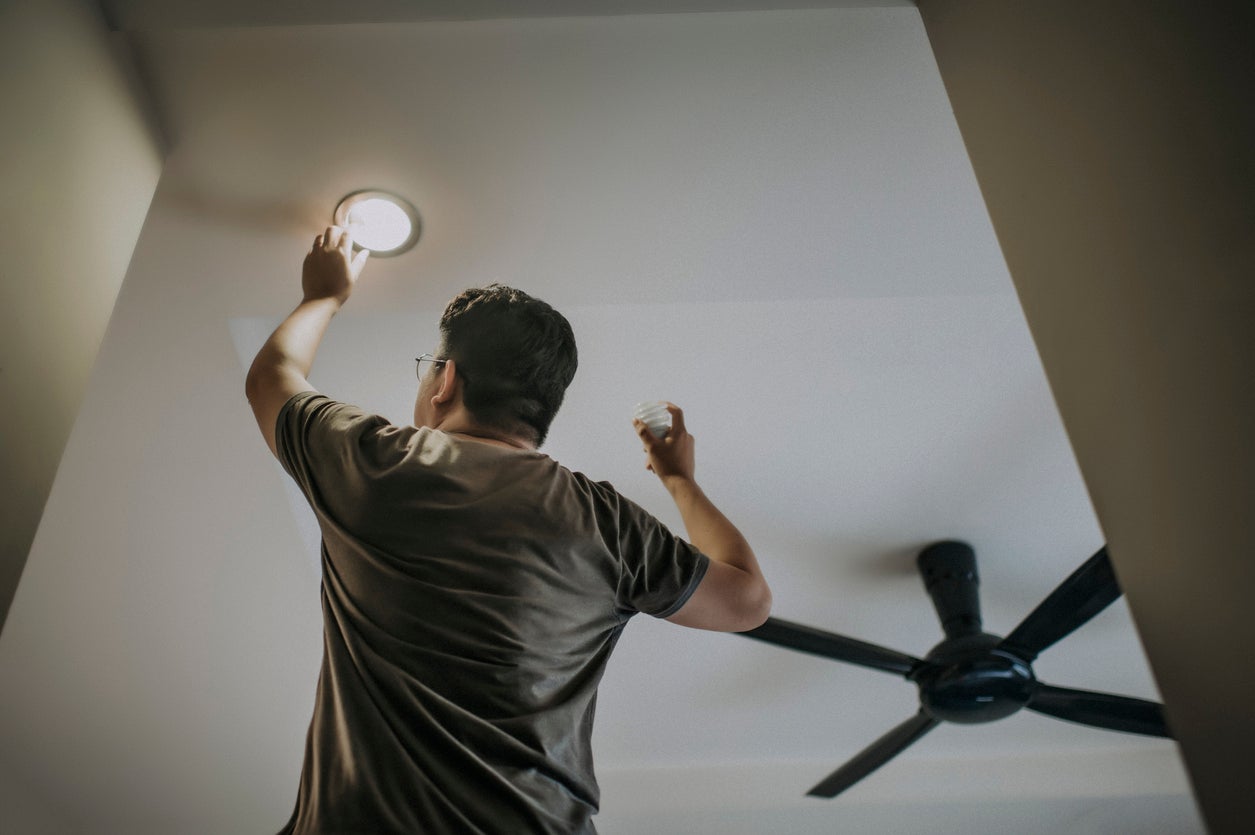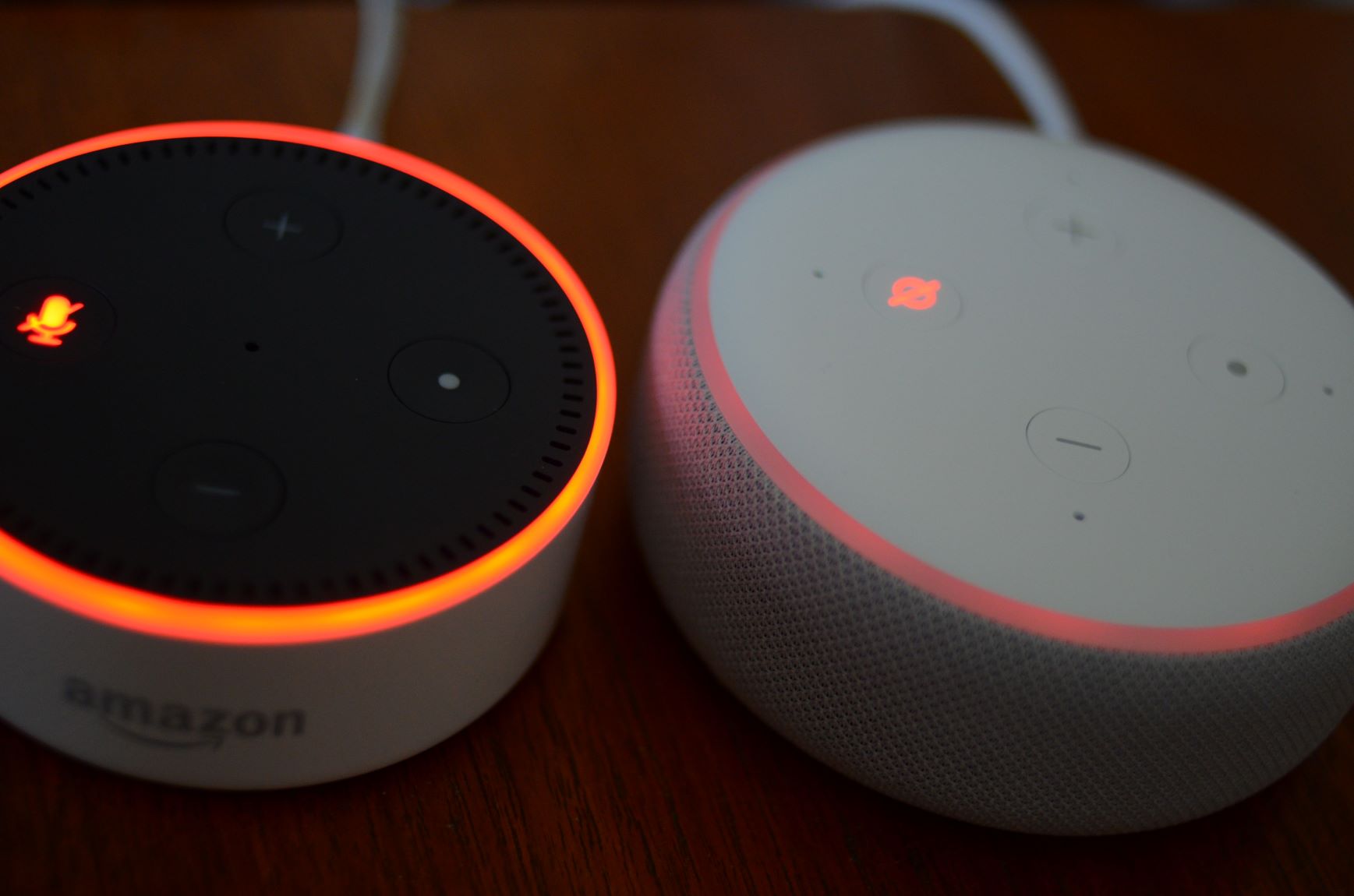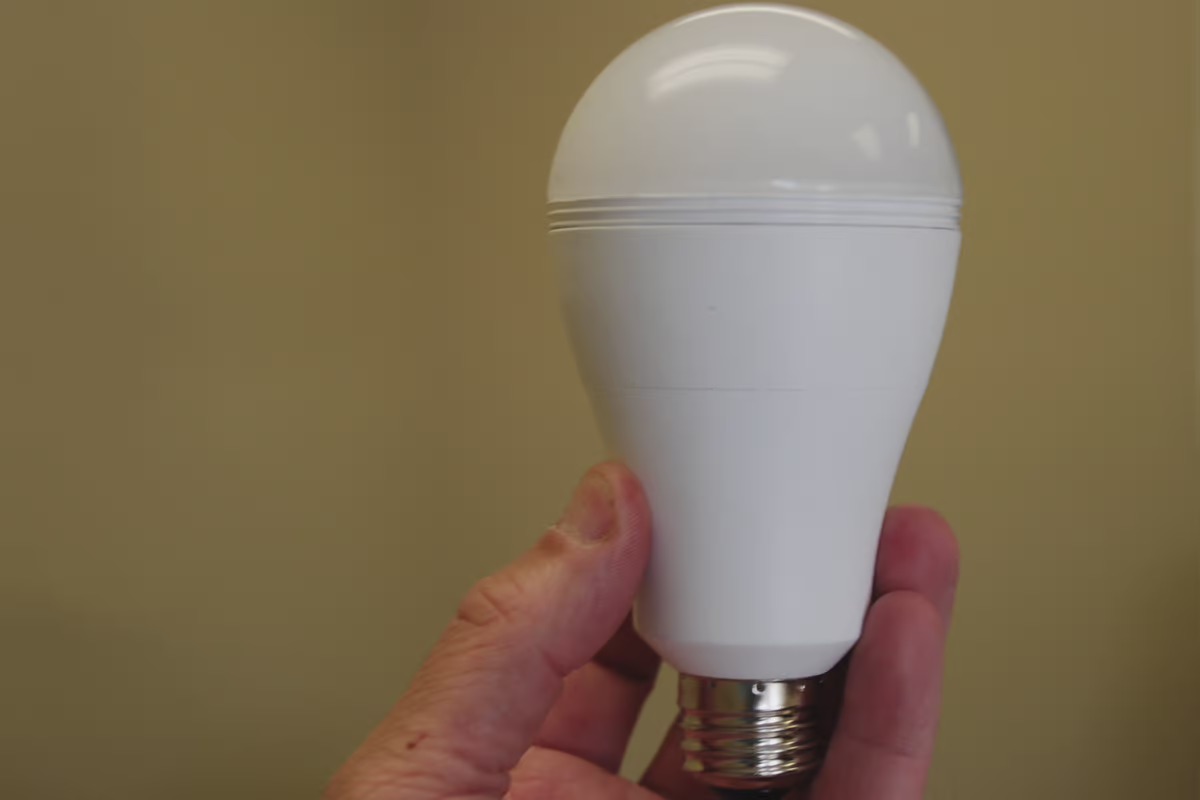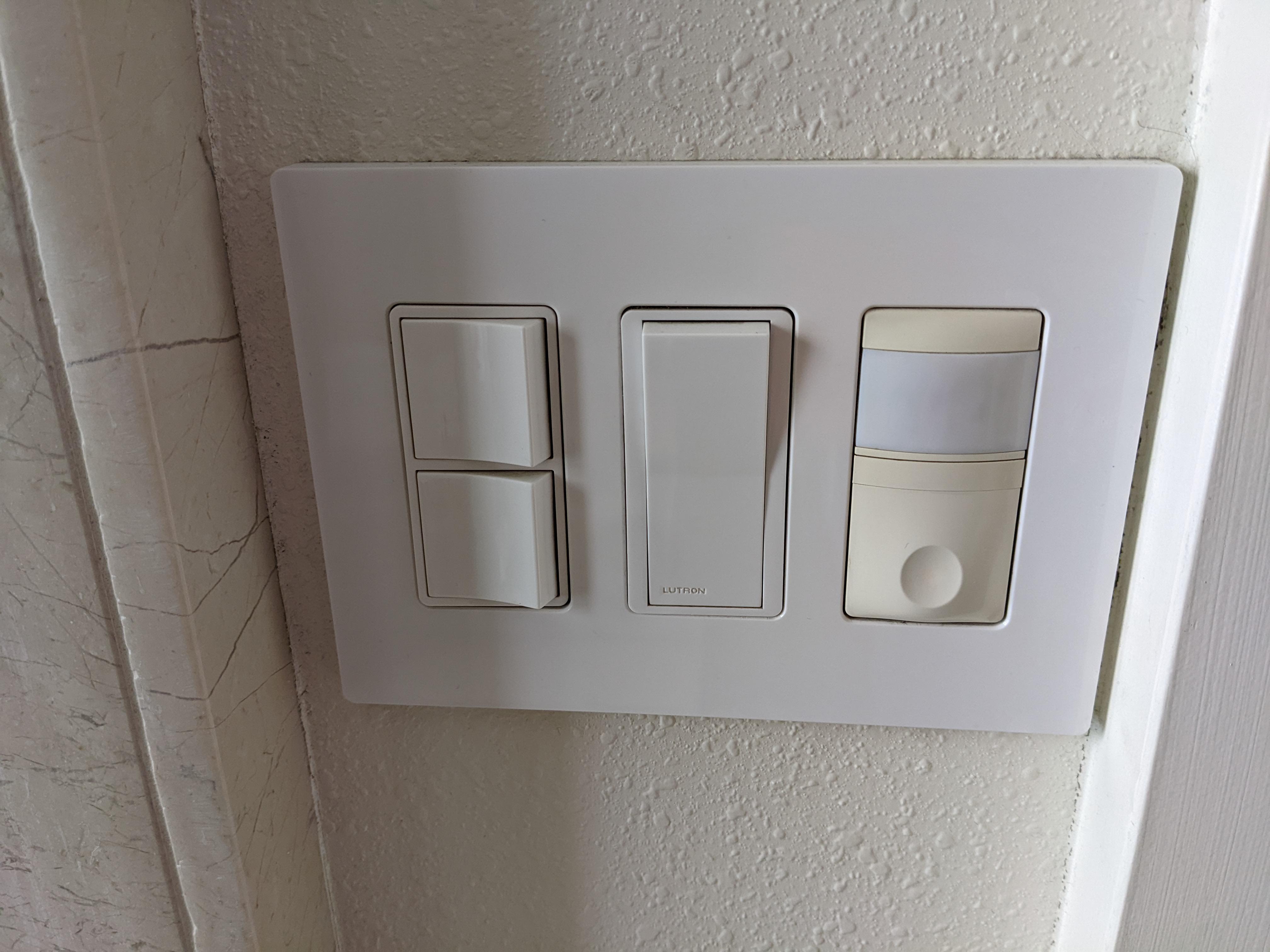

Articles
Light Bulb Glows When Switched Off
Modified: December 7, 2023
Discover a wide range of articles on how light bulbs glow even when switched off. Explore the mechanisms and scientific explanations behind this intriguing phenomenon.
(Many of the links in this article redirect to a specific reviewed product. Your purchase of these products through affiliate links helps to generate commission for Storables.com, at no extra cost. Learn more)
Introduction
Light bulbs are an essential part of our daily lives, providing illumination in our homes, offices, and public spaces. We are accustomed to the simple process of flipping a switch and experiencing instant light. However, have you ever encountered a situation where a light bulb continues to emit a faint glow even when it is switched off? This peculiar phenomenon has captivated the curiosity of many people and led to numerous theories and explanations.
In this article, we will delve into the intriguing world of light bulbs and explore the reasons behind their unexpected glow when switched off. We will uncover the science behind this phenomenon, discuss the impact on energy consumption and safety concerns, and explore troubleshooting methods to resolve the issue.
Key Takeaways:
- Unraveling the Mystery of Glowing Light Bulbs
Discover the intriguing reasons behind light bulbs emitting a faint glow when switched off, from electrical leakage to electromagnetic radiation, and learn how to troubleshoot and address the issue. - Prioritize Safety and Energy Efficiency
Understand the potential safety concerns associated with glowing light bulbs, take proactive measures to minimize energy wastage, and consider upgrading to energy-efficient bulbs for a sustainable lighting environment.
Read more: Why Is An LED Bulb Still Glowing When Off
How does a Light Bulb Work?
Before we delve into the reasons behind a light bulb glowing when switched off, it’s crucial to understand how a light bulb works in the first place. A traditional incandescent light bulb consists of several components that work together to produce light.
The heart of the light bulb is the filament, usually made of tungsten, which is mounted within a glass enclosure. When an electrical current flows through the filament, it heats up and emits light. However, the filament itself does not produce visible light. Instead, it reaches an extremely high temperature, causing it to emit thermal radiation, which then appears as visible light.
To create this necessary flow of electrical current, light bulbs are connected to a power source through a socket. A switch controls the circuit, allowing the current to either flow or be interrupted, thus turning the light on or off.
Additionally, inside the light bulb enclosure is a gas, usually a blend of argon and nitrogen, which helps to prevent the filament from deteriorating too quickly. The enclosure itself is designed to be airtight to ensure the gas remains trapped inside.
Now that we have a basic understanding of how a light bulb functions, let’s dive into the mysterious occurrence of a light bulb continuing to emit a glow even when it is switched off.
Understanding the Phenomenon: Ghost Light
When a light bulb continues to emit a faint glow after being switched off, it is often referred to as the “ghost light” phenomenon. This intriguing occurrence can be attributed to various factors, including electrical leakage and residual current.
Electrical leakage refers to the unintentional flow of electrical current through the wiring or components of an electrical device. In the case of a light bulb, a small amount of current can still pass through the circuit even when the switch is off. This minimal current is often not enough to illuminate the bulb fully but can result in a faint glow.
Residual current, also known as “phantom load” or “vampire power,” refers to the standby power consumed by electronic devices even when they are in their idle or off state. Some light bulbs, especially those with advanced features like remote control or smart connectivity, may consume a small amount of power even when they are switched off. This can cause a lingering glow in the bulb.
Another mechanism that can contribute to the ghost light phenomenon is capacitive coupling. Capacitive coupling occurs when two conductive materials, such as the filament and the base of the light bulb, are in close proximity. This can create a capacitive connection, allowing a small amount of current to pass through even when the switch is off.
Additionally, electromagnetic radiation can play a role in the ghost light phenomenon. Electronic devices, power lines, and other electrical equipment in close proximity to the light bulb can emit electromagnetic radiation. This radiation can induce an electric current in the filament, causing it to emit a faint glow even when the switch is off.
While the ghost light phenomenon can be intriguing, it is important to note that the glow emitted by the bulb is typically very faint and poses no significant danger. However, it is essential to address any electrical leakage or excessive residual current to ensure optimal energy efficiency and safety.
Reasons for a Light Bulb Glowing When Switched Off
There are several reasons why a light bulb may continue to emit a glow when it is switched off. Let’s explore some of the common causes behind this phenomenon.
1. Electrical Leakage: As mentioned earlier, electrical leakage can occur when there is an unintentional flow of current through the light bulb’s circuit, even when the switch is off. This could be due to faulty wiring, poor insulation, or a problem with the light bulb itself. The small amount of residual current can be enough to create a faint glow.
2. Residual Current: Some light bulbs, especially those with built-in electronics or advanced features, consume a small amount of power even when they are switched off. This standby power, also known as phantom load or vampire power, is needed to maintain certain functionalities like remote control or smart connectivity. The residual current can cause the light bulb to emit a faint glow.
3. Capacitive Coupling: Capacitive coupling can occur when there is a close proximity between the conductive materials of the light bulb, such as the filament and the base. In this case, a small amount of electrical current can pass through the capacitive connection, resulting in a subtle glow even when the switch is off.
4. Electromagnetic Radiation: Electrical devices, power lines, or other nearby sources of electromagnetic radiation can induce a current in the filament of a light bulb, causing it to emit a faint glow. This phenomenon is more likely to occur if the light bulb is in close proximity to sources of electromagnetic interference.
5. Energy-saving Bulbs: Compact fluorescent lamps (CFLs) and light-emitting diodes (LEDs) are known for their energy efficiency. However, these types of bulbs may exhibit a faint afterglow when switched off due to the presence of residual charge in the electronic components. This afterglow is typically harmless and diminishes over time.
It’s important to note that a slight glow after switching off a light bulb is usually harmless and does not pose any significant dangers. However, if you notice a persistent and bright glow, excessive heat, or any other abnormal behavior, it is advisable to seek professional assistance to address any underlying issues.
Electrical Leakage and Residual Current
When it comes to the phenomenon of a light bulb glowing when switched off, two common culprits are electrical leakage and residual current. Let’s explore these concepts in more detail.
Electrical Leakage: Electrical leakage refers to the unintentional flow of electrical current through the wiring or components of an electrical device, even when it’s supposed to be switched off. This can occur due to various reasons, such as faulty wiring, poor insulation, or a problem with the light bulb itself. In the case of a light bulb, a small amount of current can leak through the circuit, resulting in a faint glow.
There are a few factors that can contribute to electrical leakage in a light bulb. For instance, if the wiring within the bulb is damaged or worn out, it may lead to leakage of current. Similarly, poor insulation or improper sealing of the bulb can create pathways for the current to escape, leading to a glowing effect when the switch is off.
Residual Current: Residual current, also known as phantom load or vampire power, refers to the small amount of power consumed by electronic devices even when they are in their idle or off state. This residual current is required to maintain certain functionalities, such as standby modes or remote control capabilities. In the case of light bulbs, especially those equipped with advanced features like motion sensors or wireless connectivity, a minimal amount of power is needed to keep these features operational even when the bulb appears to be switched off. This small amount of residual current can cause the bulb to emit a faint glow.
To mitigate the effects of electrical leakage and residual current, it’s important to ensure proper electrical wiring and insulation. Regular maintenance checks should be conducted to identify and rectify any issues with the wiring system or electrical connections. It’s also advisable to use high-quality light bulbs and fixtures that are compliant with safety standards.
Additionally, minimizing vampire power consumption can help reduce the glow effect in light bulbs. This can be achieved by unplugging electronic devices when not in use or using power strips with integrated switches to completely cut off power to multiple devices at once. Invest in energy-efficient light bulbs, such as LEDs, which generally have lower standby power consumption.
By understanding the concepts of electrical leakage and residual current, we can take proactive measures to prevent or minimize the glow effect in light bulbs when they are switched off. Regular maintenance, proper insulation, and energy-conscious habits can help ensure safe and efficient use of lighting in our day-to-day lives.
Check if the light switch is a dimmer switch, as some dimmer switches can cause a light bulb to glow when turned off due to a small amount of current still passing through. If this is the case, consider replacing the dimmer switch with a standard on/off switch.
Read more: Light Bulb Is Flickering When Turned On
Capacitive Coupling and Electromagnetic Radiation
In addition to electrical leakage and residual current, capacitive coupling and electromagnetic radiation are two other factors that can contribute to the phenomenon of a light bulb glowing when switched off.
Capacitive Coupling: Capacitive coupling occurs when two conductive materials, such as the filament and the base of the light bulb, are in close proximity. This can create a capacitive connection, allowing a small amount of current to pass through even when the switch is off. The closer the conductive materials are to each other, the stronger the capacitive coupling effect becomes.
When a light bulb is switched off, but still emits a faint glow, it may be due to capacitive coupling between the filament and base, or other conductive parts within the bulb. This enables a small leakage current to flow, resulting in the glow effect. Capacitive coupling is more common in older or poorly insulated bulbs where there is a greater chance of close contact between conductive elements.
Electromagnetic Radiation: Another contributing factor to a light bulb glowing when switched off is electromagnetic radiation. Electronic devices, power lines, and other sources of electromagnetic radiation emit electromagnetic fields. When a light bulb is in close proximity to these sources, the electromagnetic radiation can induce a small current in the filament, causing it to emit a faint glow.
The effect of electromagnetic radiation on light bulbs is influenced by factors such as the strength and proximity of the radiation source. This means that in areas with a high concentration of electronic devices or strong electromagnetic fields, the chances of a light bulb glowing when switched off may increase.
To minimize the effects of capacitive coupling and electromagnetic radiation, ensure that light bulbs are properly insulated and have sufficient distance from electronic devices or other potential radiation sources. Using high-quality light fixtures and conducting regular maintenance checks can also help reduce any unwanted glow in light bulbs.
Understanding the role of capacitive coupling and electromagnetic radiation in causing a light bulb to emit a faint glow when switched off empowers us to take appropriate measures to mitigate their impact. By optimizing the positioning of light bulbs and minimizing exposure to electromagnetic fields, we can maintain a comfortable and efficient lighting environment.
Effects on Energy Consumption and Cost
The phenomenon of a light bulb glowing when switched off not only raises curiosity but also has potential implications on energy consumption and cost. Let’s explore how this phenomenon can impact energy usage and expenses.
When a light bulb continues to emit a faint glow even when it is switched off, it indicates that there is still a small amount of current flowing through the circuit. This residual current, although minimal, contributes to the overall energy consumption in your home or workplace.
While the energy consumed by a single light bulb in its off state may not be significant, the cumulative effect of multiple bulbs can add up over time. This can lead to unnecessary energy wastage and increased electricity bills.
In the case of older incandescent light bulbs, the energy consumed during the glowing effect is converted into heat. Since incandescent bulbs are highly inefficient and convert most of the electricity into heat rather than light, the additional glowing effect can slightly increase the heat output, leading to additional energy usage and potential discomfort in hot climates or confined spaces.
On the other hand, energy-efficient lighting options like compact fluorescent lamps (CFLs) and light-emitting diodes (LEDs) tend to consume much less power when in their off state. These bulbs are designed to minimize standby power consumption and may exhibit a less noticeable or nonexistent glow when switched off.
To mitigate the effects on energy consumption and cost, consider the following measures:
- Switch to Energy-efficient Bulbs: Replace older incandescent bulbs with energy-efficient alternatives like CFLs or LEDs. These bulbs consume less power, even when in standby mode or emitting a faint glow when switched off. The initial investment in new bulbs is usually offset by long-term energy savings.
- Reduce Phantom Load: Be mindful of other electronic devices in your home that consume standby power. Unplug devices when not in use or use power strips with switches to completely cut off power to multiple devices at once. This can help minimize overall energy usage and reduce electricity costs.
- Regular Maintenance: Conduct regular checks of your electrical wiring, fixtures, and light bulbs. Ensure proper insulation and efficient connections to minimize electrical leakage and the chance of residual current flow.
By being conscious of the potential impact on energy consumption and taking proactive steps, we can reduce unnecessary energy wastage and contribute to a more sustainable and cost-effective lighting environment.
Safety Concerns and Precautions
While the phenomenon of a light bulb glowing when switched off is generally harmless, it is important to be aware of any potential safety concerns and take necessary precautions to ensure the well-being of your household or workplace. Let’s explore some of the key safety considerations and precautionary measures.
1. Heat Build-up: In the case of incandescent bulbs, the faint glow when switched off can result in a slight increase in heat output. This can be a concern, especially in enclosed fixtures or spaces with poor ventilation. Ensure that the bulb is not in contact with any flammable materials and maintain proper airflow around the fixture to prevent excessive heat build-up.
2. Electrical Hazards: A persistent and bright glow, or any other abnormal behavior in a light bulb, could indicate an underlying electrical issue. It is advisable to seek professional assistance in such situations to avoid potential electrical hazards. Avoid handling or attempting repairs on your own, especially if you are not experienced with electrical systems.
3. Fire Risk: Although rare, in certain cases, a glowing light bulb can pose a fire risk if there are faults in the wiring or if the bulb is in contact with combustible materials. Regularly inspect the condition of the electrical wiring and check for any signs of damage or deterioration to minimize the risk of electrical fires.
4. Proper Disposal: When replacing light bulbs, it is important to dispose of the old ones properly. Incandescent bulbs can be discarded in regular waste while CFLs and LEDs should be taken to designated recycling centers. These bulbs may contain small amounts of mercury or other potentially harmful substances, and proper disposal ensures the safety of both people and the environment.
5. Follow Manufacturer’s Instructions: Always adhere to the manufacturer’s guidelines and instructions for the installation, maintenance, and use of light bulbs. This includes the recommended wattage, appropriate fixtures, and any specific safety precautions mentioned in the user manual. Taking these precautions can help avoid potential risks and ensure the longevity of your lighting system.
By being aware of the potential safety concerns associated with light bulbs glowing when switched off and taking necessary precautions, you can maintain a safe environment and minimize any potential risks. If you have any concerns or notice any abnormal behavior in your light bulbs, consult a qualified electrician to assess the situation and provide appropriate solutions.
Troubleshooting and Resolving the Issue
If you encounter the issue of a light bulb glowing when switched off, there are several troubleshooting steps you can take to identify and resolve the underlying problem. Here are some common approaches to help you address the issue:
1. Check the Switch: Start by ensuring that the switch connected to the light bulb is functioning correctly. Toggle the switch on and off a few times to see if it has any effect on the glowing. Sometimes, a faulty switch can cause the bulb to remain partially lit even when it is switched off. If the switch seems to be the problem, consider replacing it.
2. Inspect the Bulb: Examine the light bulb closely for any visible signs of damage or defects. Look for loose connections, frayed wires, or other abnormalities. If the bulb is visibly damaged, replace it with a new one. Remember to handle the bulb with care and ensure it is compatible with the fixture and wattage requirements.
3. Check for Electrical Leakage: Use a multimeter or a non-contact voltage tester to check for any electrical leakage in the circuit. If you detect any current flow when the switch is off, there may be a wiring issue or a problem with the electrical connections. In such cases, it is best to consult a licensed electrician to identify and rectify the problem.
4. Consider Using a Capacitor: If capacitive coupling is the cause of the glowing effect, using a capacitor in parallel with the light bulb can help eliminate the residual current. This helps to prevent the capacitive coupling effect by diverting the current flow. However, it is crucial to consult a professional electrician for assistance in installing a capacitor, as incorrect installation can lead to further issues.
5. Upgrade to Energy-efficient Bulbs: As mentioned earlier, modern energy-efficient bulbs, such as CFLs or LEDs, generally have lower standby power consumption. Upgrading to these types of bulbs may reduce the chances of the glowing effect when switched off. Additionally, energy-saving bulbs provide various benefits such as longer lifespan, reduced energy costs, and environmental friendliness.
6. Consult a Professional: If the glowing effect persists or if you are unsure about the cause, it is recommended to seek the assistance of a qualified electrician. They can perform a thorough inspection of your electrical system, including the wiring, switches, and light fixtures, to identify any underlying issues and provide appropriate solutions.
By following these troubleshooting steps and seeking professional guidance if needed, you can effectively address the issue of a light bulb glowing when switched off. Remember to prioritize safety and consult experts when dealing with electrical systems to prevent any risks or hazards.
Read more: When Was The First Light Bulb Created
Conclusion
The phenomenon of a light bulb glowing when switched off may seem perplexing, but it can be attributed to various factors such as electrical leakage, residual current, capacitive coupling, and electromagnetic radiation. While this glowing effect is generally harmless, it is important to be aware of potential safety concerns and take necessary precautions to ensure the well-being of your household or workplace.
Understanding the mechanisms behind the glow effect can help you make informed decisions and troubleshoot any issues that arise. Regular maintenance checks, proper insulation, and using energy-efficient bulbs are some of the measures you can take to prevent or minimize the glowing effect when the bulb is switched off. Additionally, following safety guidelines and seeking professional assistance when needed is crucial for maintaining a safe and efficient lighting environment.
Remember that the glowing effect is often negligible and does not significantly impact energy consumption or cost. However, it’s important to address any persistent or abnormal glow, excessive heat, or other irregular behavior in light bulbs, as these may indicate underlying electrical issues that require professional attention.
As technologies continue to advance, the glowing effect in light bulbs is becoming less prevalent with the introduction of energy-efficient options such as CFLs and LEDs. These bulbs consume less power when in standby mode and generally exhibit minimal or no glowing effect when switched off.
In conclusion, understanding the reasons behind a light bulb glowing when switched off allows us to make informed decisions, troubleshoot any issues, and promote energy efficiency and safety. By implementing the appropriate precautions and seeking professional help when needed, we can create a comfortable, efficient, and safe lighting environment for our daily lives.
Frequently Asked Questions about Light Bulb Glows When Switched Off
Was this page helpful?
At Storables.com, we guarantee accurate and reliable information. Our content, validated by Expert Board Contributors, is crafted following stringent Editorial Policies. We're committed to providing you with well-researched, expert-backed insights for all your informational needs.














0 thoughts on “Light Bulb Glows When Switched Off”